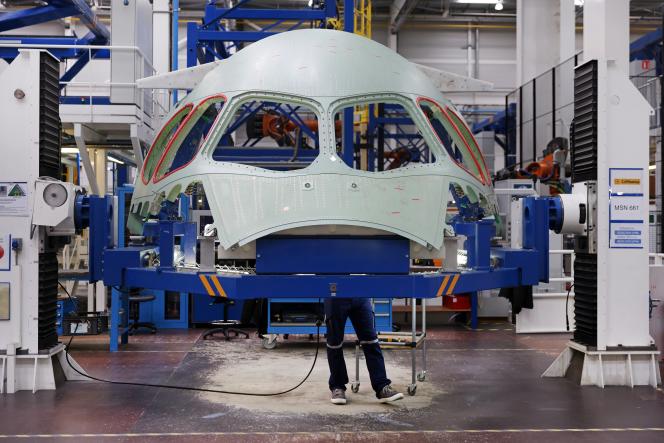“In 2020, aeronautics was swept away head on [par l’épidémie de Covid-19]. Executive recruitment fell by 29%. Today, the momentum has resumed. Aeronautics is once again playing its role as a locomotive », says Cyrille Longuépée, the regional delegate of the Association for the employment of executives (APEC) in Occitania. At the end of the year, the aeronautical and space sectors should account for nearly 200,000 jobs, according to the Grouping of French aeronautical and space industries (Gifas). At the end of 2021, the sector represented 188,000 jobs, including almost a third in Occitania, with a network of suppliers that extends throughout France.
The impact of the Covid-19 epidemic on employment continued until 2021: that year, the sector again lost 3% of its workforce, despite the recruitment of 9,300 people, including almost three-quarters (73%) on permanent contracts. Then, 2022 marked the beginning of a changeover with the return to net job creation, thanks to a first wave of hiring “massive” : 18,000 permanent contracts and 6,700 work-study students. “A sharp increase in production rates was initiated in 2022”explain the Gifas report on careers in the aeronautics and space industry. With a second wave of the same magnitude expected in 2023, “the sector should return to its pre-crisis employment level by the end of the year”.
This very strong demand for jobs is driven by three drivers: “World air traffic has returned to what it was before Covid-19, the air fleet must be renewed, in particular for ecological reasons, and we have a very good economic situation linked to defence”explains Philippe Dujaric. “Our three main contractors are civilians and military”recalls the director of social affairs and training at Gifas.
“Recruit without competition”
Of the 25,000 recruitments (including 7,000 work-study students) planned for 2023, the balance between the professions is maintained. At the last assessment carried out in the sector at the end of 2021, the workforce included, in various trades with high technical skills from baccalaureate level, 45% of engineers and managers, 31% of employees, technicians and supervisors, and a little fewer (24%) workshop operators and technicians. In 2022, more than half (58%) of recruitments were engineers and managers. This year, the candidates sought are again more than half engineers and managers, a good 20% production technicians and the rest senior technicians. The year 2023 will be that of“a double battle of workloads in production and in technology”comments Philippe Dujaric.
You have 50.21% of this article left to read. The following is for subscribers only.
